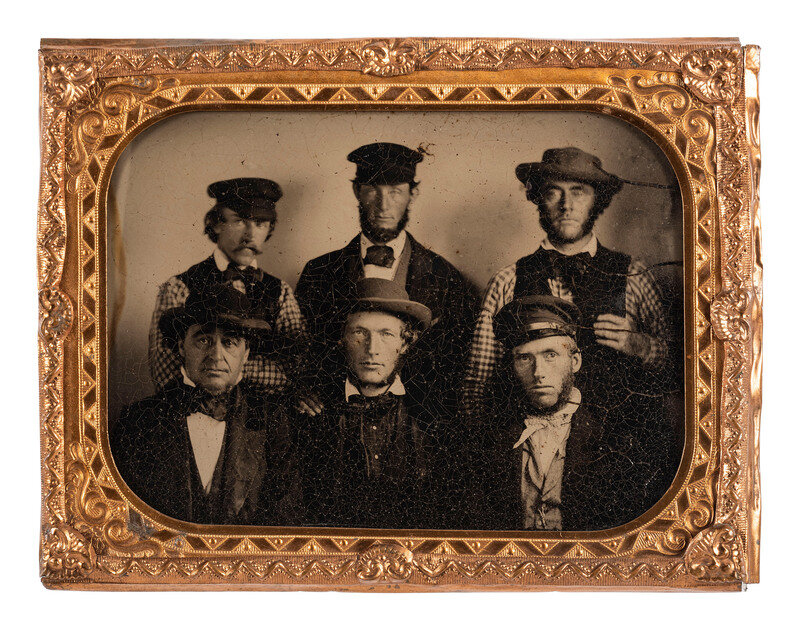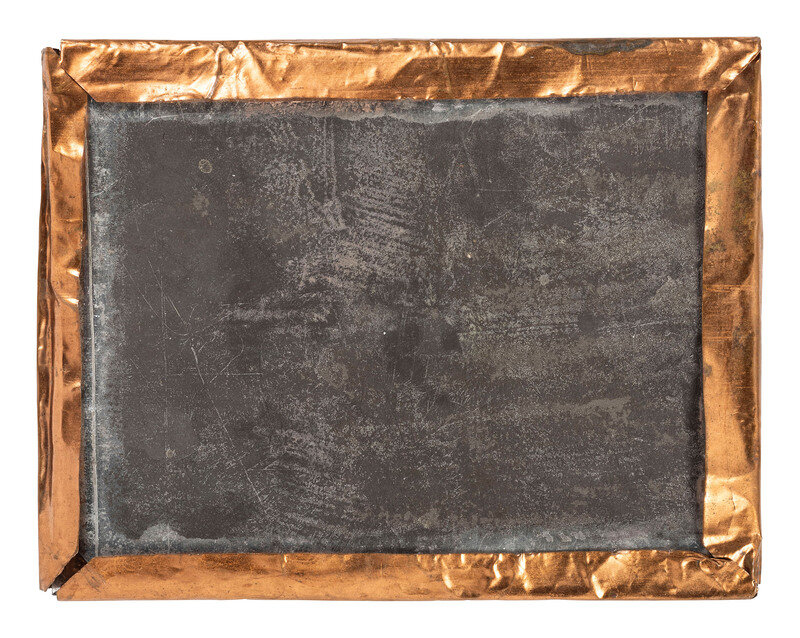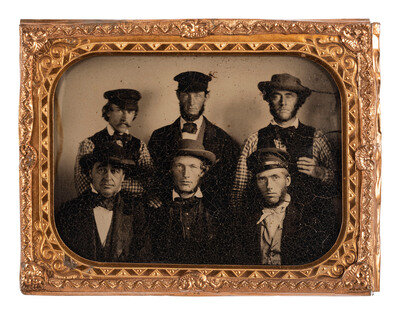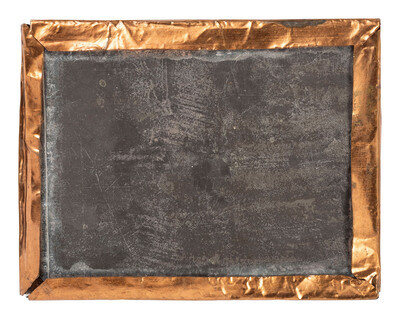Condition Report
Contact Information
Auction Specialist
Lot 541
[LINCOLNIANA]. Quarter plate ambrotype of Hannibal Hamlin with five unidentified men. POSSIBLY ONE OF THE EARLIEST KNOWN PHOTOGRAPHS OF LINCOLN'S FIRST VICE PRESIDENT.
Sale 2057 - American Historical Ephemera and Photography
Oct 25, 2024
10:00AM ET
Live / Cincinnati
Own a similar item?
Estimate
$2,500 -
3,500
Price Realized
$1,651
Sold prices are inclusive of Buyer’s Premium
Lot Description
[LINCOLNIANA]. Quarter plate ambrotype of Hannibal Hamlin with five unidentified men. POSSIBLY ONE OF THE EARLIEST KNOWN PHOTOGRAPHS OF LINCOLN'S FIRST VICE PRESIDENT.
Quarter plate ambrotype of six men posed together against a simple studio backdrop, including Hannibal Hamlin at lower left and five unidentified gents. Two of the men wear matching checkered shirts and vests. Although the purpose of the photograph is unknown, it is possible that these men were clients that Hamlin represented as an attorney in the court of law. Housed under mat, glass, and preserver only, no case.
Hannibal Hamlin (1809-1891), a Maine native, spent the majority of his life serving the public, though he is best remembered today as Abraham Lincoln's first Vice President. A surveyor and teacher before he was admitted to the Maine bar in 1833, Hamlin, a Democrat, was elected to Maine's House of Representatives in 1836 and served as speaker in 1837, 1839 and 1840. He served two terms in the United States House of Representatives, from 1843–1847, and was elected to fill a U.S. Senate vacancy in 1848, and to a full senatorial term in 1851.
An anti-slavery proponent, Hamlin did not approve of the strong pro-slavery wing of the Democratic Party. The passage of the Kansas-Nebraska Act determined that the two states (Kansas and Nebraska) could enter the Union with or without slavery, and the legislation opened the territory to organized migrations of pro- and anti-slavery groups. Southerners entered the territory with their slaves while active members of the Anti-Slavery Society also arrived.
Hamlin, disgusted with the majority of his party's views on slavery, then switched to the Republican Party. He left the Senate to run for Governor of Maine, and was elected, only to serve one month (January 1856 to February 1856). With little interest in a governorship, Hamlin had made a deal with the newly formed Republican Party: he would run for governor if he could then return to the U.S. Senate. He won the governorship - a major boost for the Republican Party in Maine - assumed office in January 1857, but resigned in February to return to the U.S. Senate.
In 1860, the Republican Party nominated Abraham Lincoln for the presidency and Hamlin, the anti-slavery newly-minted Republican, was chosen as his running mate. With Abraham Lincoln as the party's nomination for president, Republicans saw Hamlin as the fellow with strong anti-slavery, and pro-Union credentials, and he helped geographically balance the ticket with his Northeastern roots. Lincoln and Hamlin did not meet in person until after they won the election. Lincoln purportedly asked Hamlin for advice on choosing cabinet members, but after taking office, and with the outbreak of the Civil War, Hamlin had almost no role in the administration, a typical scenario in this period.
As Vice President, Hamlin missed being part of the political process but felt it was his duty to serve. He despised his new position as vice president. He found presiding over the Senate boring, and was frequently absent. When the Republican Party dropped him from the ticket in 1864, Hamlin was surprisingly disappointed. His home state of Maine was sure to vote Republican with or without Hamlin on the ticket, and the Republican party wanted to widen appeal. Andrew Johnson of Tennessee was chosen to run with Lincoln.
Hamlin missed becoming President by just a few weeks after Lincoln was assassinated in April 1865. It was often speculated how different Reconstruction would have been if Hamlin, a supporter of Radical Reconstruction, was then still vice president.
Descended Directly in the Family of Hannibal Hamlin



